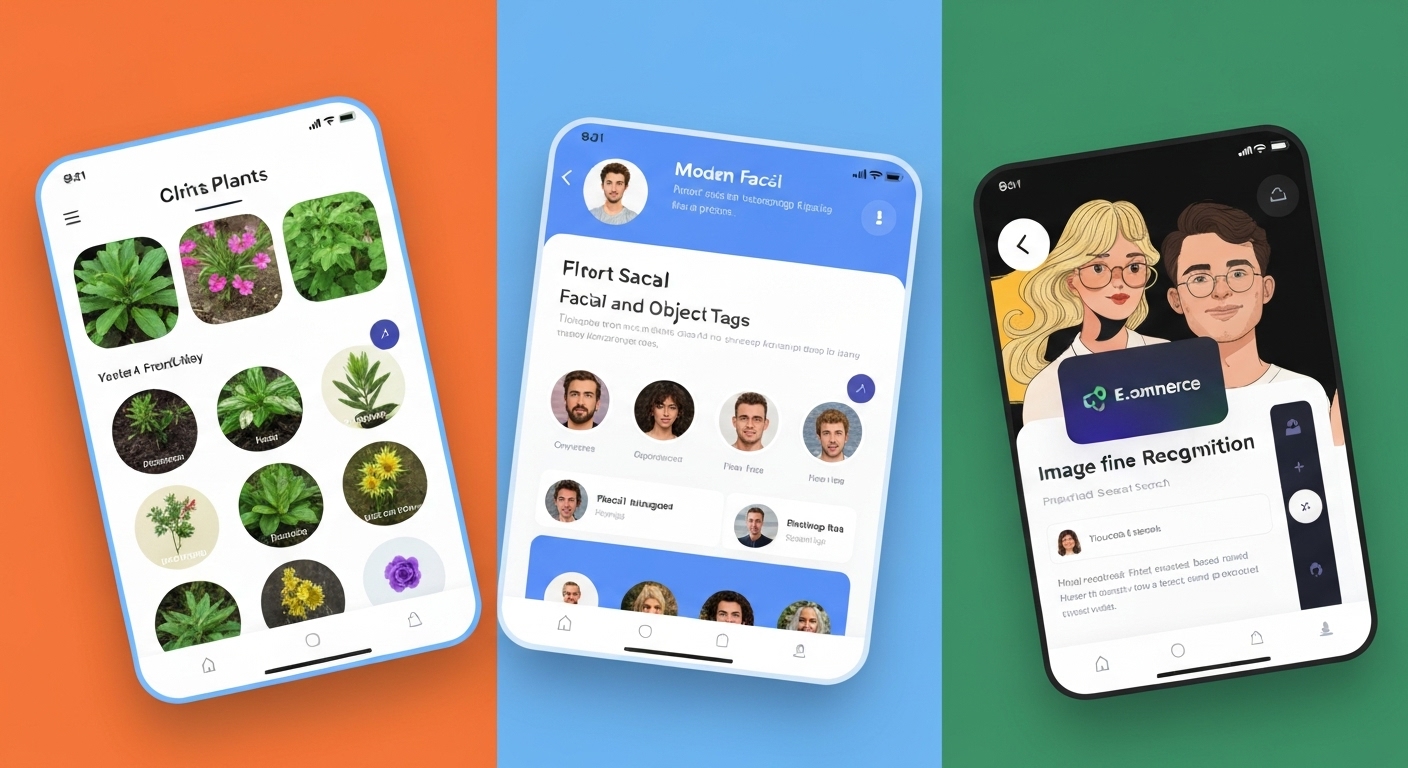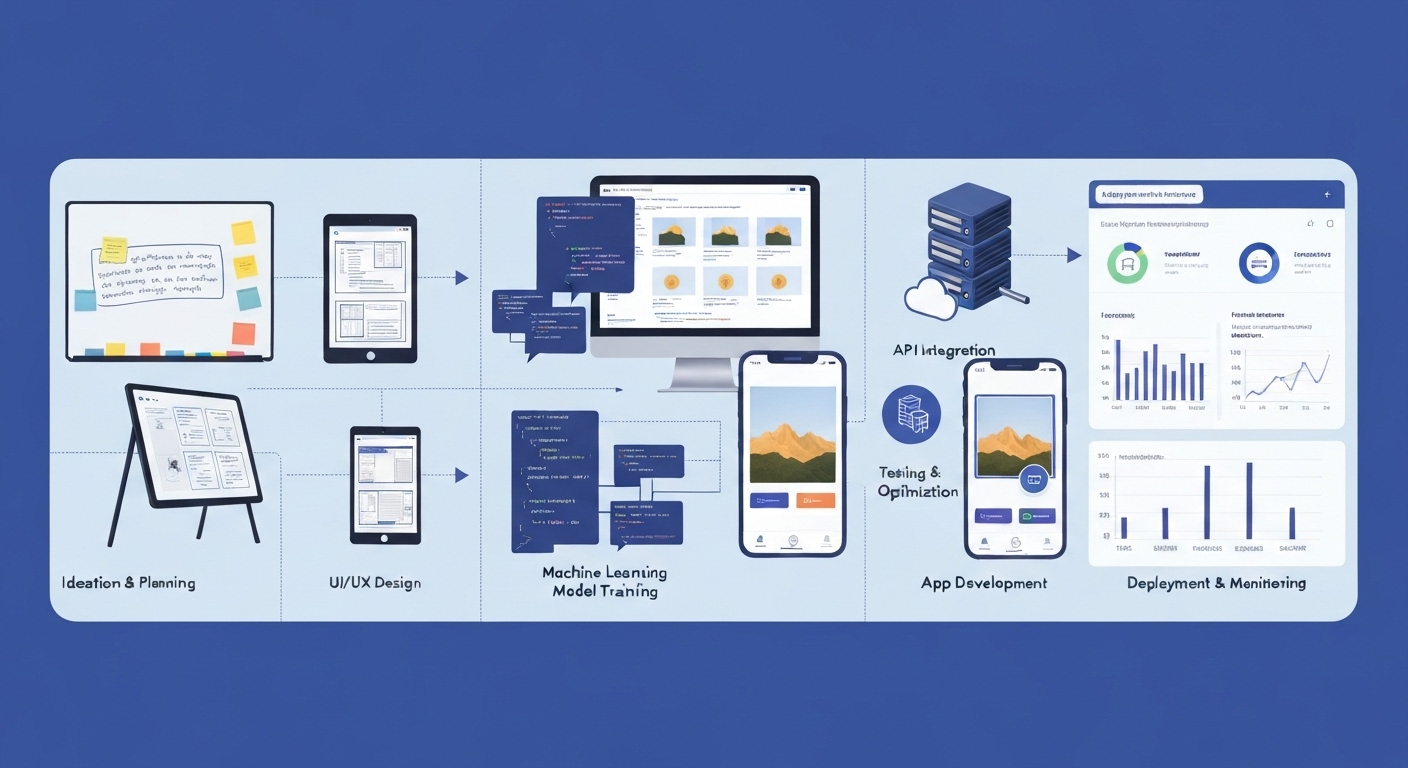Machine Learning for Image Recognition in Apps : A Comprehensive Guide
Machine learning for image recognition in apps is transforming how we interact with mobile technology. From identifying objects in photos to enabling advanced augmented reality experiences, the possibilities are vast and rapidly evolving.
Understanding Image Recognition with Machine Learning
Image recognition, powered by machine learning, allows applications to ‘see’ and interpret images. This involves training algorithms to identify patterns and features within images, enabling them to classify objects, scenes, and even people. This technology is increasingly integrated into various mobile applications to enhance user experience and provide innovative functionalities.

Key Applications of Machine Learning for Image Recognition in Apps
The applications of machine learning in image recognition are diverse and span across various industries. Here are some notable examples:
- E-commerce: Visual search, product recognition, and personalized recommendations.
- Healthcare: Medical image analysis, disease detection, and diagnostic assistance.
- Security: Facial recognition for authentication and surveillance systems.
- Gaming: Augmented reality experiences and character recognition.
- Navigation: Object detection for autonomous vehicles and pedestrian navigation.
These applications are just the tip of the iceberg, with new use cases emerging constantly as the technology advances.
Benefits of Integrating Image Recognition AI into Mobile Apps
Integrating image recognition AI into mobile apps offers several significant benefits:
- Enhanced User Experience: Providing intuitive and engaging interactions.
- Improved Efficiency: Automating tasks and reducing manual effort.
- Increased Accuracy: Minimizing errors in object detection and classification.
- Personalized Experiences: Tailoring content and recommendations based on visual data.
- Competitive Advantage: Differentiating apps with innovative features.
These benefits translate to increased user engagement, customer satisfaction, and ultimately, business success.

Convolutional Neural Networks (CNNs) for Image Recognition
Convolutional Neural Networks (CNNs) are the workhorses of modern image recognition. These networks are specifically designed to process images and extract relevant features. CNNs consist of multiple layers that learn hierarchical representations of images, from simple edges and textures to complex objects and patterns.
Popular CNN architectures for image recognition include:
- AlexNet: One of the pioneering CNN architectures that demonstrated the power of deep learning for image classification.
- VGGNet: Known for its simplicity and uniformity, using small convolutional filters throughout the network.
- ResNet: Introduced residual connections to address the vanishing gradient problem and enable the training of very deep networks.
- Inception (GoogLeNet): Employs an inception module to capture features at different scales, improving efficiency and accuracy.
Training Machine Learning Models for Image Classification
Training machine learning models for image classification requires a large dataset of labeled images. The model learns to associate visual features with specific categories. This process typically involves the following steps:
- Data Collection: Gathering a diverse and representative dataset of images.
- Data Preprocessing: Cleaning, resizing, and augmenting the images.
- Model Selection: Choosing an appropriate CNN architecture for the task.
- Training: Feeding the data into the model and adjusting its parameters to minimize errors.
- Validation: Evaluating the model’s performance on a separate dataset to prevent overfitting.
- Testing: Assessing the model’s generalization ability on unseen data.
Careful attention to these steps is crucial for achieving high accuracy and robustness.
Implementing Image Recognition in Mobile App Development
Mobile app development incorporating image recognition involves several key considerations, including:
- Platform Choice: Selecting the appropriate mobile platform (iOS, Android, or cross-platform frameworks).
- Library Selection: Choosing suitable machine learning libraries and frameworks (e.g., TensorFlow Lite, Core ML).
- Hardware Constraints: Optimizing models for limited processing power and memory.
- Privacy Concerns: Ensuring user data is handled securely and ethically.
- Real-time Performance: Achieving fast and responsive image recognition.
Successfully addressing these challenges is essential for creating a seamless and effective user experience.

Using TensorFlow Lite and Core ML for On-Device Image Recognition
TensorFlow Lite (for Android) and Core ML (for iOS) are popular frameworks for deploying machine learning models on mobile devices. These frameworks provide optimized APIs and tools for running models efficiently on-device, reducing latency and improving privacy.
Key advantages of using TensorFlow Lite and Core ML include:
- Low Latency: Performing inference directly on the device without relying on cloud servers.
- Privacy: Keeping user data on the device, minimizing the risk of data breaches.
- Offline Functionality: Enabling image recognition even without an internet connection.
- Reduced Bandwidth Costs: Minimizing data transfer between the device and the cloud.
These frameworks are essential for building high-performance and privacy-conscious image recognition apps.
Optimizing Machine Learning Models for Mobile Devices
Optimizing models for mobile devices is crucial for achieving real-time performance and minimizing resource consumption. Common optimization techniques include:
- Model Quantization: Reducing the precision of model parameters to decrease size and improve speed.
- Model Pruning: Removing unnecessary connections and layers to simplify the model.
- Knowledge Distillation: Training a smaller, faster model to mimic the behavior of a larger, more accurate model.
- Hardware Acceleration: Leveraging specialized hardware (e.g., GPUs, NPUs) for faster inference.
These techniques can significantly improve the efficiency and performance of machine learning models on mobile devices.
Ethical Considerations and Privacy in Image Recognition Apps
The use of image recognition in AI apps raises important ethical considerations and privacy concerns. It’s essential to address these issues proactively to ensure responsible and trustworthy applications.
Key ethical and privacy considerations include:
- Data Privacy: Protecting user data from unauthorized access and misuse.
- Bias Mitigation: Addressing biases in training data to prevent discriminatory outcomes.
- Transparency: Providing users with clear explanations of how image recognition is being used.
- Consent: Obtaining informed consent from users before collecting and processing their images.
- Security: Implementing robust security measures to prevent data breaches and cyberattacks.
Adhering to ethical principles and privacy regulations is crucial for building trust and maintaining user confidence.

Future Trends in Machine Learning for Image Recognition in Apps
The field of machine learning for image recognition is constantly evolving. Some key future trends include:
- Edge Computing: Moving more processing to the edge of the network, closer to the data source.
- Federated Learning: Training models collaboratively across multiple devices without sharing data.
- Self-Supervised Learning: Training models on unlabeled data to reduce the need for manual annotation.
- Explainable AI (XAI): Developing models that can explain their decisions and predictions.
- Generative AI: Using AI to generate new images and videos for various applications.
The Impact of Object Detection
Object detection is a specific area within image recognition where algorithms not only identify objects but also locate them within an image. This has profound implications for applications like autonomous driving, robotics, and advanced security systems. Object detection algorithms are becoming increasingly sophisticated, capable of handling complex scenes and identifying multiple objects simultaneously.
The fusion of these trends will lead to more powerful, efficient, and responsible image recognition apps in the future.
For more information on the latest advancements in AI, visit NIST.
Check out our services at flashs.cloud.
In conclusion, machine learning for image recognition in apps is a rapidly advancing field with vast potential. By understanding the key concepts, applications, and ethical considerations, developers can leverage this technology to create innovative and impactful mobile experiences.
HOTLINE
+84372 005 899


